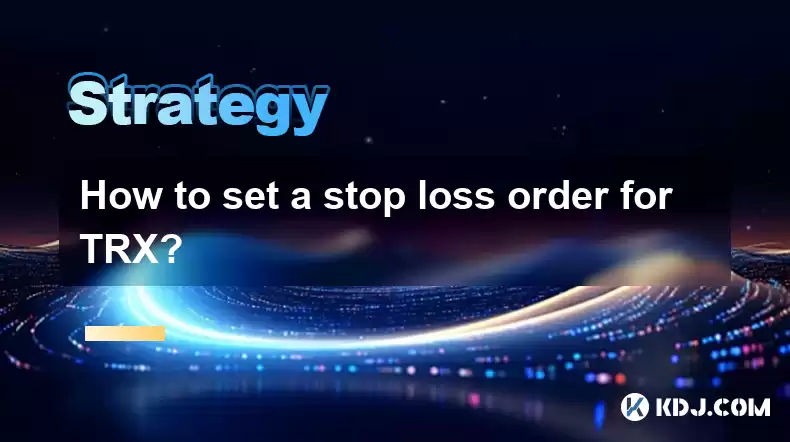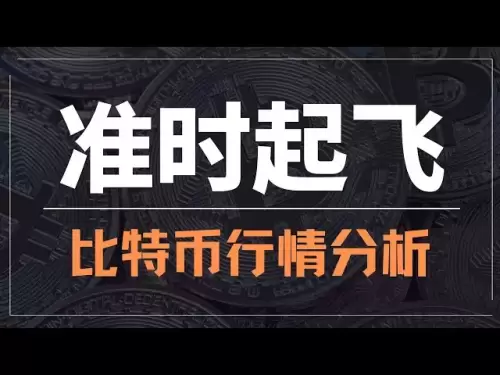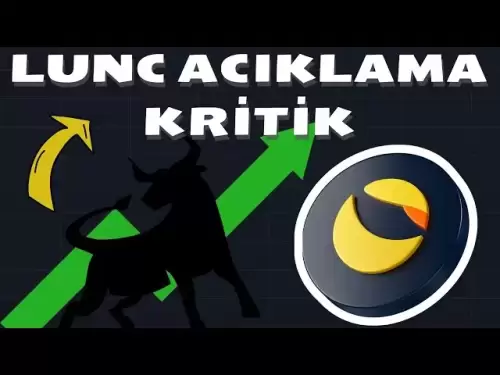-
 Bitcoin
Bitcoin $117300
1.93% -
 Ethereum
Ethereum $3866
5.21% -
 XRP
XRP $3.109
3.81% -
 Tether USDt
Tether USDt $1.000
0.01% -
 BNB
BNB $781.5
1.52% -
 Solana
Solana $173.0
2.95% -
 USDC
USDC $0.9998
0.00% -
 Dogecoin
Dogecoin $0.2181
6.31% -
 TRON
TRON $0.3403
0.93% -
 Cardano
Cardano $0.7683
3.91% -
 Hyperliquid
Hyperliquid $40.08
5.09% -
 Sui
Sui $3.742
7.38% -
 Stellar
Stellar $0.4152
4.69% -
 Chainlink
Chainlink $18.40
10.03% -
 Bitcoin Cash
Bitcoin Cash $580.6
2.21% -
 Hedera
Hedera $0.2543
4.25% -
 Ethena USDe
Ethena USDe $1.001
-0.01% -
 Avalanche
Avalanche $22.94
3.52% -
 Litecoin
Litecoin $121.8
2.24% -
 UNUS SED LEO
UNUS SED LEO $8.955
-0.41% -
 Toncoin
Toncoin $3.330
3.03% -
 Shiba Inu
Shiba Inu $0.00001270
2.97% -
 Uniswap
Uniswap $10.34
6.42% -
 Polkadot
Polkadot $3.805
3.86% -
 Dai
Dai $1.000
0.01% -
 Bitget Token
Bitget Token $4.429
1.80% -
 Cronos
Cronos $0.1495
4.65% -
 Monero
Monero $255.6
-9.08% -
 Pepe
Pepe $0.00001096
4.40% -
 Aave
Aave $282.9
7.85%
How to set a stop loss order for TRX?
Setting a stop loss order for TRX on exchanges like Binance, Huobi, and KuCoin helps manage risk by automatically selling at a predetermined price to limit potential losses.
Apr 18, 2025 at 05:22 pm

Setting a stop loss order for TRX (Tron) is a crucial strategy for managing risk and protecting your investment in the volatile cryptocurrency market. A stop loss order automatically sells your TRX when the price reaches a certain level, helping you limit potential losses. This article will guide you through the process of setting a stop loss order for TRX on various popular cryptocurrency exchanges.
Understanding Stop Loss Orders
Stop loss orders are designed to help traders minimize losses by automatically selling an asset when its price falls to a predetermined level. For TRX, this means setting a price at which you are willing to sell your holdings if the market moves against your position. This tool is especially useful in the crypto market, where prices can fluctuate dramatically in a short period.
Choosing the Right Exchange
Before setting a stop loss order for TRX, you need to choose a cryptocurrency exchange that supports this feature. Some popular exchanges that offer stop loss orders include Binance, Huobi, and KuCoin. Each exchange may have slightly different procedures, but the basic principles remain the same.
Setting Up a Stop Loss Order on Binance
To set a stop loss order for TRX on Binance, follow these steps:
- Log into your Binance account and navigate to the TRX trading page.
- Click on the "Order" tab and select "Stop-Limit".
- Enter the Stop Price, which is the price at which you want the order to be triggered.
- Enter the Limit Price, which is the price at which you want your TRX to be sold once the stop price is reached.
- Specify the amount of TRX you want to sell.
- Review your order and click "Place Order" to confirm.
Setting Up a Stop Loss Order on Huobi
Setting a stop loss order for TRX on Huobi involves the following steps:
- Log into your Huobi account and go to the TRX trading page.
- Click on the "Order" tab and choose "Stop-Limit Order".
- Set the Trigger Price, which is the price that will activate the order.
- Set the Limit Price, which is the price at which your TRX will be sold.
- Enter the amount of TRX you wish to sell.
- Double-check your order and click "Submit Order" to proceed.
Setting Up a Stop Loss Order on KuCoin
To set a stop loss order for TRX on KuCoin, follow these steps:
- Log into your KuCoin account and navigate to the TRX trading page.
- Click on the "Order" tab and select "Stop-Limit".
- Enter the Stop Price to set the trigger point for your order.
- Enter the Limit Price to determine the selling price once the stop price is hit.
- Specify the amount of TRX you want to sell.
- Review your order and click "Place Order" to finalize.
Monitoring and Adjusting Your Stop Loss Order
After setting a stop loss order for TRX, it's important to monitor the market and adjust your order as necessary. Market conditions can change rapidly, and you may need to update your stop price or limit price to reflect new market realities. Most exchanges allow you to modify or cancel your stop loss orders at any time.
Considerations for Setting Stop Loss Orders
When setting a stop loss order for TRX, consider the following factors:
- Volatility: TRX, like many cryptocurrencies, can experience high volatility. Set your stop loss at a level that balances protecting your investment with allowing for normal price fluctuations.
- Market Trends: Analyze the current market trends and set your stop loss accordingly. If TRX is in a strong uptrend, you might set a tighter stop loss to lock in profits.
- Risk Tolerance: Your personal risk tolerance should guide your stop loss strategy. If you are more risk-averse, you may set a higher stop loss to minimize potential losses.
Common Mistakes to Avoid
When setting a stop loss order for TRX, be aware of these common mistakes:
- Setting the Stop Loss Too Tight: If your stop loss is too close to the current price, you might get stopped out due to normal market fluctuations.
- Ignoring Market News: Major news events can cause sudden price movements. Keep an eye on news that could affect TRX and adjust your stop loss accordingly.
- Forgetting to Adjust: As TRX's price moves, you may need to adjust your stop loss to protect your gains or limit losses.
Frequently Asked Questions
Q: Can I set a stop loss order for TRX on all cryptocurrency exchanges?
A: No, not all cryptocurrency exchanges support stop loss orders. It's important to check if your chosen exchange offers this feature before attempting to set one.
Q: What happens if the price of TRX gaps below my stop loss price?
A: If the price of TRX gaps below your stop loss price, your order may be executed at the next available price, which could be lower than your specified limit price. This is known as slippage.
Q: Can I set multiple stop loss orders for TRX at different price levels?
A: Yes, some exchanges allow you to set multiple stop loss orders for the same asset at different price levels. This can help you manage risk more effectively.
Q: Is it possible to set a stop loss order for TRX using a mobile app?
A: Yes, many exchanges offer mobile apps that allow you to set and manage stop loss orders for TRX directly from your smartphone.
Disclaimer:info@kdj.com
The information provided is not trading advice. kdj.com does not assume any responsibility for any investments made based on the information provided in this article. Cryptocurrencies are highly volatile and it is highly recommended that you invest with caution after thorough research!
If you believe that the content used on this website infringes your copyright, please contact us immediately (info@kdj.com) and we will delete it promptly.
- Bitcoin Reserve, Gold Revaluation, Congress Considers: A New Era for US Financial Strategy?
- 2025-08-08 04:30:12
- KAITO's Momentum: Can It Reclaim Support Amidst Social Media Scrutiny?
- 2025-08-08 04:30:12
- Pi Coin's dApp and AI Potential: Building a Decentralized Future
- 2025-08-08 02:30:12
- Ruvi AI Takes the Lead: Outshining Dogecoin on CoinMarketCap
- 2025-08-08 02:50:12
- Cryptos Under $1: Is Ripple Still the King?
- 2025-08-08 03:50:12
- Cold Wallet, Bonk Price, ICP Price: Navigating the Crypto Landscape in 2025
- 2025-08-08 03:56:12
Related knowledge

How to avoid common crypto investment mistakes?
Jul 13,2025 at 01:35am
Understanding the Risks of Crypto InvestmentInvesting in cryptocurrency can be highly rewarding, but it also comes with significant risks. One of the ...

What is a long-short crypto strategy?
Jul 15,2025 at 10:56am
Understanding the Basics of a Long-Short Crypto StrategyA long-short crypto strategy is an investment approach where traders simultaneously take long ...

What is a long-short crypto strategy?
Jul 11,2025 at 01:28pm
Understanding the Basics of Long-Short Crypto StrategyA long-short crypto strategy is an investment approach where traders take both long and short po...

How to use the RSI indicator for crypto?
Jul 12,2025 at 03:56pm
Understanding the RSI Indicator in Cryptocurrency TradingThe Relative Strength Index (RSI) is a momentum oscillator used to measure the speed and chan...

Is copy trading a good strategy for crypto beginners?
Jul 12,2025 at 08:28am
Understanding Copy Trading in the Cryptocurrency MarketCopy trading is a strategy where novice traders replicate the trades of experienced investors a...

How to build a crypto portfolio with $1000?
Jul 13,2025 at 08:14pm
Understanding the Basics of Cryptocurrency InvestmentBuilding a crypto portfolio with $1000 starts with understanding the fundamentals of cryptocurren...

How to avoid common crypto investment mistakes?
Jul 13,2025 at 01:35am
Understanding the Risks of Crypto InvestmentInvesting in cryptocurrency can be highly rewarding, but it also comes with significant risks. One of the ...

What is a long-short crypto strategy?
Jul 15,2025 at 10:56am
Understanding the Basics of a Long-Short Crypto StrategyA long-short crypto strategy is an investment approach where traders simultaneously take long ...

What is a long-short crypto strategy?
Jul 11,2025 at 01:28pm
Understanding the Basics of Long-Short Crypto StrategyA long-short crypto strategy is an investment approach where traders take both long and short po...

How to use the RSI indicator for crypto?
Jul 12,2025 at 03:56pm
Understanding the RSI Indicator in Cryptocurrency TradingThe Relative Strength Index (RSI) is a momentum oscillator used to measure the speed and chan...

Is copy trading a good strategy for crypto beginners?
Jul 12,2025 at 08:28am
Understanding Copy Trading in the Cryptocurrency MarketCopy trading is a strategy where novice traders replicate the trades of experienced investors a...

How to build a crypto portfolio with $1000?
Jul 13,2025 at 08:14pm
Understanding the Basics of Cryptocurrency InvestmentBuilding a crypto portfolio with $1000 starts with understanding the fundamentals of cryptocurren...
See all articles

























































































